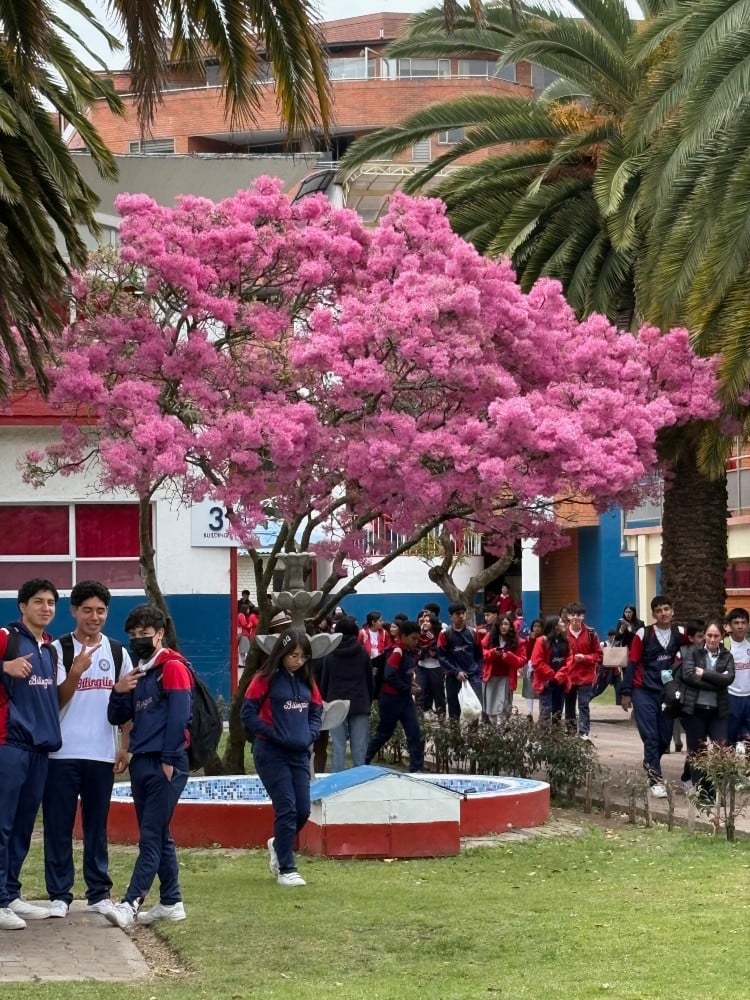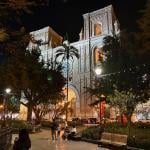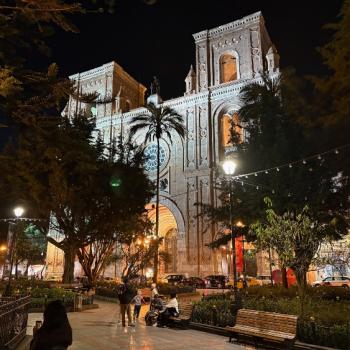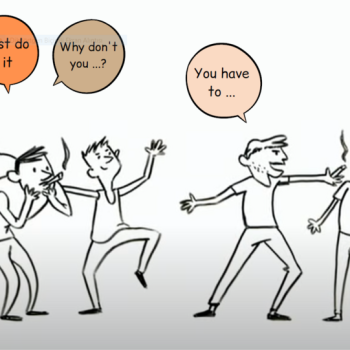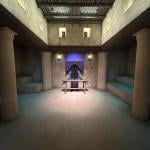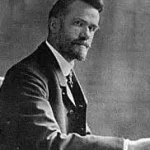The city of Cuenca, Ecuador, was founded in 1557. That was just eleven years after the death of Martin Luther.
It is amazing to me that here in the “New World,” we have European-style late-medieval, early Renaissance cities. Though not on the seacoast but in the Andes Mountains, Cuenca, with a population of half a million, looks like a Mediterranean city with its white houses with red-tiled roofs and its narrow, winding streets built long before the automobile. The city is built around a cathedral–actually, in Cuenca, two of them, a “new one,” in the 19th century neo-Gothic style, and an “old one” in the Baroque style. In front of the cathedrals is a lively town square and a bustling marketplace.
We were here to study a school that is seeking accreditation with the Consortium for Classical Lutheran Education (CCLE). I went with my wife Jackquelyn, who leads CCLE’s accreditation and certification programs, and Rev. Robert Paul, the vice-president of the organization. The school, the Unidad Educativa Bilingüe Interamericana (Inter-American Bilingual Educational Unit)–“Bilingüe” for short–had approached CCLE a few years ago about joining our organization (which they did) and possibly getting accredited, sending some of their people to our summer conference. Now it was time for CCLE to check out the school.
Our task was to see how “classical” and how “Lutheran” it is. I found that not only does Bilingüe offer a classical education, I felt like I was getting a classical education as we interacted with people and a culture that held on to elements of a time-honored and time-tested civilization that we Americans have been drifting away from. I want to tell you about that. Later, I’ll write another post about what we learned about Global Christianity, including Global Lutheranism, in what used to be “the mission field.”
The school, with levels from elementary through high school, has over 1500 students! It has a large, well-equipped campus that rivals the facilities of many Christian colleges that I have known. Bilingüe began as an English-language school for missionaries, later admitting Ecuadorian students who wanted an American-style education. In 2000, the American mission organization pulled out and sold the school to eight Lutheran laymen. Their foundational documents committed the school to the Bible, the Small Catechism, and the other Lutheran confessions. They wanted a truly Bilingual school–Spanish and English–and they opened their doors to everyone. In 2017, having become aware of what was happening in the United States with classical Christian education, Bilingüe adopted that approach, bringing over the distinguished classical educator Christopher Perrin to help them.
We visitors each sat through multiple classes and had long conversations with teachers, administrators, and students. Never have I seen classical pedagogy carried out so intentionally, enthusiastically, and thoroughly. Each unit in every class on every subject is carefully planned out, with every lesson plan incorporating some element of the classical trivium: grammar (knowledge), logic (understanding), and rhetoric (personal creative application). And of course, the trivium in its original sense of mastering language runs throughout the school, since their students are mastering two languages. The main language of instruction–including for the quadrivium courses of math, science, and music–is English. Their approach, as implemented by Bilingüe teachers, is very effective. The high school students are quite fluent, sometimes serving as our interpreters, and an upper-school English teacher told me that all of his students have passed the Cambridge English Exam, the gold standard for international English proficiency.
I sat in on a class of first year students, 4 and 5 years old, the equivalent of our kindergarteners, who had been in school for only one week. Already, these little children were speaking enough English to have simple conversations. The energetic teacher spoke to them in English, plus a little Spanish, and made them speak in English. If nature called, they had to say, “May I go to the bathroom, please?” The day I was there the lesson was in responding to questions, such as “how old are you?” They learned to say, “I am four” or “I am five.” The teacher drew a birthday cake and had them draw the right number of candles on it, thus integrating the language instruction with counting skills. At one point in the class, she brought out a box wrapped like a birthday present. She opened it and brought out a picture of Jesus. She said, “Jesus is a gift.” And “every year of your life that Jesus gives you is also a gift.”
Oh, yes. In addition to every lesson incorporating each facet of the trivium, every lesson had to incorporate some tie-in to the Christian faith. This the teachers did with great creativity and effectiveness. They also had to address the requirements of the government-imposed curriculum. Private and religious schools in Ecuador do not enjoy the liberties that we Americans take for granted but must reflect the national curriculum, including monthly patriotic assemblies. But Bilingüe manages, and the results are evident even to the government. While we were there, the Ecuadorian ministry of education formally recognized the validity of the classical approach to education. Not only that, Bilingüe made the list of Ecuador’s most innovative schools. That’s kind of humorous, a centuries-old educational approach being classified as new and “innovative,” but that’s fine.
Besides classical education in the school, though, we saw many elements in Ecuador that attested to what is “classic”–that is, universal to all human beings, values and practices that stand the test of time, but that we North Americans have drifted away from. For example, the students showed a high respect for their teachers. At the end of every class, they would make a point of saying, “Thank you, teacher!” When they walked by us, the students–from 4-year-olds through teenagers–would always give us a bright smile and a “Buenos dias!”, or, even more frequently in a desire to practice their English with Americans, a “Good morning!” The adults too overwhelmed us with their courtesy, kindness, and generosity.
We stayed in a “Mission House” right on campus, which featured individual apartments, plus larger units with bunk beds, designed originally to house visiting missionaries and larger groups on mission trips. But these folks also invited us into their homes, where we saw the depths of their “family values.” The principal’s son is currently studying in the United States at the Free Lutheran Bible College and Seminary in Plymouth, Minnesota. (I believe that’s where long-time Cranach reader and Lutheran novelist Lars Walker works!) The father and son called each other every night–cell phones and computer technology are now everywhere–and you could tell that they pined for each other. One of the owners invited us to his house for his teenaged daughter’s birthday party. One of their customs is to tape photographs of the birthday child from throughout her life on the kitchen wall. That was very touching, as was the owner’s taking us aside to show us the wedding pictures of when he and his wife got married.
One expression of culture, civilization, and social meaning is food. We greatly enjoyed the food there, which was not at all spicy like Mexican food, but featured lots of fruit, meat, corn meal concoctions, and potatoes (which originated here in the Andes, whereupon the Spanish colonists made it a staple throughout the world). The principal’s wife made us a very traditional Ecuadorian meal of tamals, related to but not identical to Mexican tamales, consisting of corn meal (masa) creations, one savory, one with meat, and one sweet, wrapped in banana leaves. We feasted on those. After we finished, we were told to get in the car to go to a restaurant! It turns out, our tamal meal was only “coffee”! (A teacher later explained that Ecuadorians basically have five meals, each of which is a social occasion: breakfast, a “snack” that usually consists not of cookies but a small sandwich with french fries–which explained our break fare–then lunch, usually the biggest meal of the day that always includes some kind of rice, then coffee, then late at night dinner! Despite so much eating, Ecuadorians tend to be much thinner than Americans!)
The restaurant we went to specialized in cuy. That is to say, guinea pig. We didn’t have to order that Ecuadorian delicacy, we were assured, but Pastor Paul and I were game. My wife Jackie was not, which was fine. Then we rodent-eaters were invited back to the kitchen to watch the cuy being prepared. Here we saw the little guys being roasted on spits. Jackie saw my photo of the impaled guinea pigs and exclaimed, “But you can see their faces!” Now I had assumed that our hosts were gently teasing us Americans, wanting to see just how far we would go with Ecuadorian cuisine. Standing up for the honor of my country, I endured the experience. (Guinea pig really does taste like chicken–a gamy and slightly sweet dark meat–though there isn’t much meat on guinea pig.)
After we got back home, I did a little research and found that eating cuy for Ecuadorians is a festive occasion, used specifically to honor guests! Giving us a hard time would have been out of character. They were honoring us. Not only that, going back to watch the cuy being cooked is part of the custom. Traditionally, this was seen as a way of honoring the animal.
Every day our hosts took us to restaurants, often really nice chef-driven restaurants. But hardly anything on the menu cost more than $10. In 2000, the government of Ecuador made a brilliant decision: to adopt as their official currency the U.S. dollar. This gave them a (relatively) stable currency that protected them from the hyperinflation that plagued other South American countries. So Ecuador’s economy is doing pretty well–the poverty rate fell from 40% of the population in 2001 to 17% in 2011, which is credited to the adoption of the dollar. Ecuador is the leading exporters of bananas, as well as producing lots of coffee and cocoa. It also helps that they have oil. But Ecuadorians are nowhere as rich as Americans. For us visitors, the U.S. dollar goes a long ways, but what is inexpensive to us is expensive to them, since they have far fewer dollars to spend. A middle class family in Ecuador might bring in $1,000 per month. Most people make hundreds of dollars less than that. But prices are low, so they get by.
What this means, though, is that an American retiree in the United States who can barely get by here on a $2000 per month social security check can live like an aristocrat in Ecuador! And thousands of Americans are doing just that, coming particularly to Cuenca. I met one of these expatriates at church, a gentleman my age and like me a retired college professor. He said that the cost of living is 75% less in Cuenca than it is in the United States. He and his wife live in a large house that costs just over $600 per month in rent, though you can rent a nice apartment for $300. Health care is excellent and cheap. He and his wife bought some inexpensive health insurance but said they usually just pay cash. He said a medical procedure that would have cost him $5000 in the U.S. cost him only $750 here. But he has family in the U.S.A.! I could never move away from my native land where my children and grandchildren are! I can see the attraction for a retiree of living in Ecuador, but I could never do it.
Another thing that struck me was that nobody talked about politics. I was surprised that no one asked me about President Trump. Finally, two days before we left, someone did, a 16-year-old student, who asked me what I thought of him. Ecuadorians seem very pro-American. The country is currently facing an incursion of Columbian narco-gangs–mostly in the coastal cities, not in Cuenca, which is considered very safe–and their president is battling them. He has reportedly asked President Trump to open a military base in Ecuador so as to serve as a deterrent to the drug gangs. But this young man just wondered what I thought about our president. I said that Trump’s second election has done much to reverse the dominance of the cultural left, though I disagree with him on tariffs and wish he would not be so divisive. He seemed to understand our problem with illegal immigration. Trump’s policies, though, make it very hard for Ecuadorians to get visas to come to come to the U.S. legally, not because they want to immigrate but for short-term reasons. We had Bilingüe teachers and administrators come to our CCLE summer conferences, but this may be difficult this year because it’s so hard to get visas. We had big plans for mutual exchange programs, which would benefit both our American teachers and Ecuadorian teachers, but visa applications from young Ecuadorians are now typically rejected out of worry that, like so many who are here illegally, they will stay. One option, one English teacher told me, is to put up a $13,000 bond, which she would receive back upon returning to Ecuador. But, again, that is more than a year’s wages and she couldn’t possibly raise that kind of money.
I could keep going on, telling you about our excursion in the Andes Mountains, 2.6 miles above sea level (and I could hardly catch my breath in the mile high city of Denver!) and our other adventures and conversations. I’ll tell you some of them when I recount what I learned about global Christianity and global Lutheranism from our visit to Ecuador.
My point now is that there is something “classical” about a culture that retains its traditional values and customs even as it enters the modern world. That still treasures the institution and relationships of the family. That surrounds itself with beauty, whether natural or artistic or the common crafts of everyday life. That holds to the ceremonies of courtesy, respect, and concern for others. This is not just culture but civilization.
We North Americans once had that and sometimes still do, but much of that mindset is lost. We would do well to recover that classical way of life again.
Photo of Unidad Educativa Bilingüe Interamericana in Cuenca, Ecuador, by G. E. Veith


